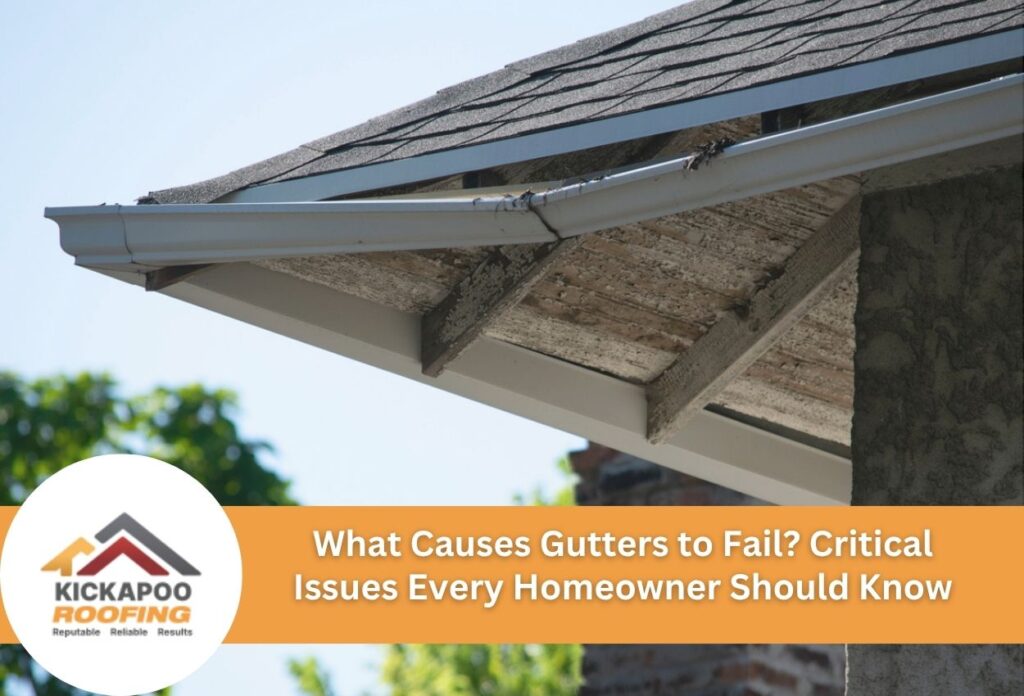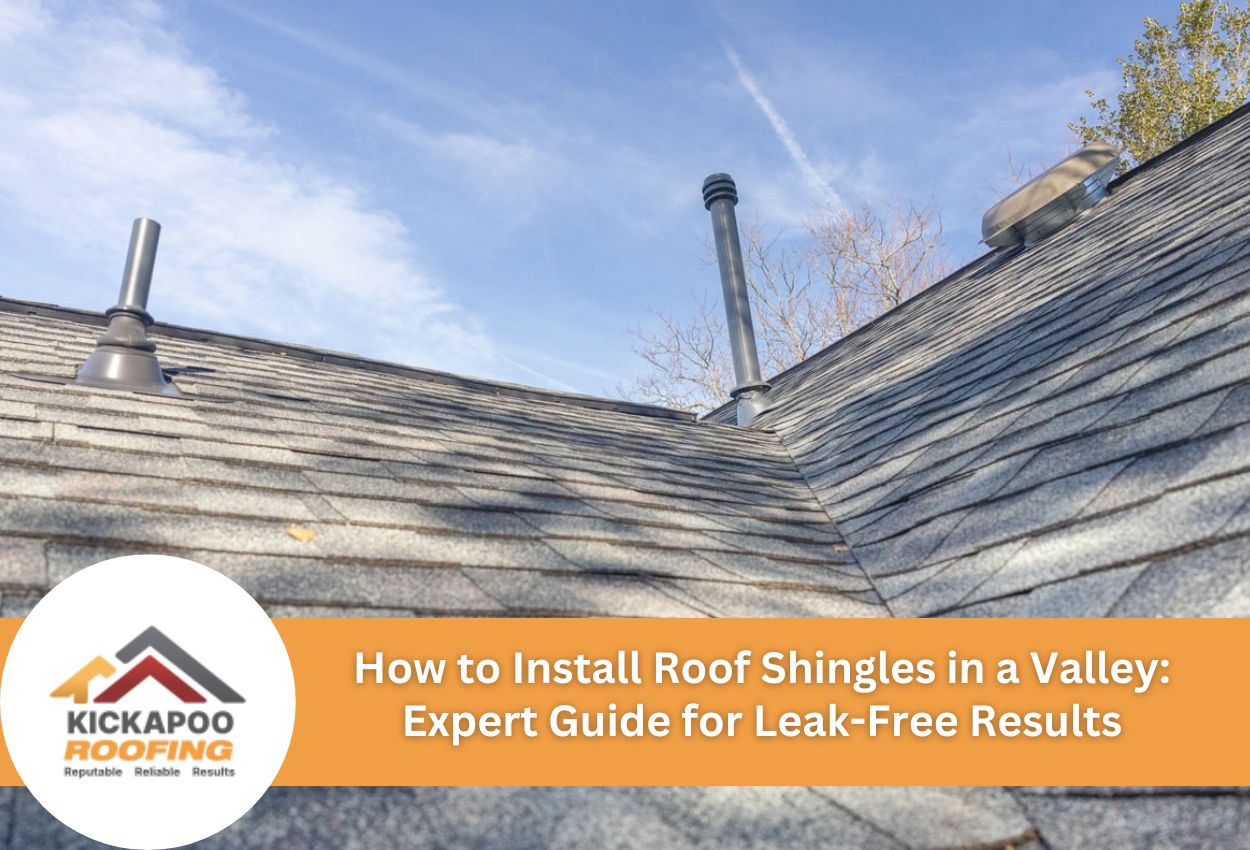Gutters are there to protect your home from even the smallest form of water damage, as they silently carry water away from your foundation, siding, and landscaping. When functioning properly, these unassuming systems prevent thousands of dollars in potential structural damage. However, like any home component, gutters are susceptible to failure over time. For homeowners across Wisconsin, Iowa, and Minnesota, where seasonal weather extremes test even the most robust gutter systems, understanding what causes gutters to fail is essential knowledge.
From clogged downspouts to improper installation, several factors contribute to gutter deterioration and eventual system failure. Recognizing the early signs of gutter damage allows you to address small issues before they escalate into expensive repairs. Sagging sections, water overflow during rainstorms, or visible spots of rust are all warning signals that your water management system may be compromised.
By identifying common gutter damage signs and understanding their causes, you can take proactive steps to extend your gutter’s lifespan and protect your home’s structural integrity. This knowledge becomes particularly valuable in regions where heavy snowfall, spring thaws, and summer storms place additional stress on residential gutter systems throughout the year.
Improper Installation: The Starting Point of Gutter Problems
The foundation of a reliable gutter system begins with the right installation. Unfortunately, many gutter failures can be traced back to improper installation techniques that compromise the system’s ability to function from day one. One of the most common installation mistakes is incorrect pitch or slope. Gutters need a subtle but specific slope toward downspouts to effectively channel water away from your home. When installed too straight, water pools and puts weight directly on the hangers, but if the pitch is too steep, water rushes too quickly, causing overflow.
Using the wrong fastening methods is another critical installation error. Gutters secured with improper spacing between hangers or with low-quality fasteners will eventually pull away from the fascia board, especially under the weight of heavy winter snow. Poor seam connections also create vulnerable points where leaks develop, allowing water to damage your home’s exterior and foundation.
In our region’s challenging climate, professional installation makes a significant difference in gutter performance and longevity. Local contractors understand how freeze-thaw cycles affect gutter systems and know the proper techniques to ensure your gutters withstand our unique weather conditions. They’ll select appropriate materials, properly secure the system, and ensure correct pitch, all of which are critical factors in preventing premature gutter failure and protecting your home from water damage for years to come.
Clogging: The Number One Enemy of Functional Gutters
Of all the threats facing your gutter system, clogging stands out as the most persistent and destructive. When leaves, twigs, pine needles, and other debris accumulate in your gutters, they create miniature dams that prevent water from flowing freely to the downspouts. During heavy rainfall, these types of blockages force water to spill over the sides, defeating the entire purpose of your gutter system and potentially damaging your home’s foundation, siding, and landscaping.
The weight of debris-filled, water-logged gutters puts enormous stress on mounting hardware. Over time, this excess weight causes gutters to pull away from the fascia board, creating gaps where water can seep behind the gutter and rot the underlying wood. As sections begin to sag, low points form where standing water accelerates corrosion and creates breeding grounds for mosquitoes.
Midwest homeowners face unique seasonal clogging challenges. Spring brings seed pods and flower debris, summer storms deposit granules from aging shingles, fall introduces mountains of leaves, and winter creates dangerous ice dams when meltwater refreezes in clogged channels. Homes surrounded by mature trees in Wisconsin, Iowa, and Minnesota require particularly vigilant gutter maintenance to prevent these accumulations from compromising system performance and causing premature gutter failure. Regular cleaning, especially after major weather events, remains essential for maintaining the gutter’s function and extending the system’s lifespan.
Weather-Related Damage and Environmental Factors
The harsh weather conditions across Wisconsin, Iowa, and Minnesota create unique challenges for gutter systems that often lead to premature failure. Freeze-thaw cycles represent one of the most destructive forces affecting gutters in our northern region. When water becomes trapped in gutters due to clogs or improper drainage, it freezes and expands, forcing seams apart and creating cracks that worsen with each cycle. This repetitive stress can transform minor issues into major structural failures within just one winter season.
Ice dams are one of the most severe threats that roofs face in winter. These ice formations occur when heat escaping from poorly insulated roofs melts snow that sits at the peak, which then refreezes when it reaches the cooler edges. The resulting ice buildup creates tremendous weight that can tear gutters away from the fascia board. Heavy snow accumulation makes this problem worse, with some fully loaded gutters supporting hundreds of pounds of additional weight they weren’t designed to handle.
Extreme temperature fluctuations common to our Midwest climate cause metal gutters to expand and contract significantly. During summer, aluminum gutters can expand nearly an inch over a 50-foot run when temperatures swing from morning to afternoon. This constant expansion and contraction gradually loosen fasteners, weaken seams, and create gaps where water can escape. Properly installed gutter systems account for this thermal movement with expansion joints and appropriate fastening techniques that accommodate these natural material responses to temperature changes.
Aging Materials and Natural Deterioration
Even the highest quality gutters eventually reach the end of their functional lifespan through natural deterioration. Aluminum gutters typically last 20 to 30 years under ideal conditions, while vinyl may show significant degradation after 10 to 15 years in our harsh Midwest climate. Copper gutters, though more expensive initially, can last more than 50 years, but develop a patina over time. Signs that the materials have reached the end of their lifespans include consistent rusting at seams, visible holes or cracks, and sections that remain bent or damaged after attempting repairs.
Different materials deteriorate in distinctive ways. Aluminum gutters develop white corrosion spots and pitting before actual holes form. Vinyl becomes brittle from UV exposure, leading to cracking during temperature fluctuations common in Wisconsin winters. Steel gutters rust from the inside out, often appearing sound until they suddenly fail. Continuous exposure to sun, rain, and seasonal temperature extremes accelerates the deterioration of all materials.
The aging process compromises gutters in subtle ways before obvious failure occurs. Seams weaken first, allowing water to escape in small amounts that damage fascia boards over time. UV radiation breaks down sealants and causes color fading, while constant moisture exposure supports mold growth that gradually deteriorates materials. Recognizing these early signs of natural gutter aging allows homeowners throughout Wisconsin, Iowa, and Minnesota to plan replacements before catastrophic failures occur during critical weather events.
Not Enough Maintenance: The Silent Gutter Killer
Regular maintenance is the most cost-effective way to prevent gutter failure, yet it’s frequently overlooked until problems become severe. In the Midwest’s variable climate, gutters require seasonal attention to function properly. Spring maintenance should include clearing winter debris and checking that no fasteners have loosened during the freeze-thaw cycles. Summer inspections should focus on ensuring downspouts remain clear after storms, while fall maintenance demands swift leaf removal.
Many homeowners underestimate how quickly small maintenance issues can build up and escalate into system-wide failures. What begins as a minor clog can rapidly lead to standing water, which speeds up corrosion and places excess weight on mounting hardware. Ignoring small leaks along seams also allows water to damage the fascia boards and siding, potentially creating entry points for moisture into your home’s structure. In our northern climate, neglected maintenance before winter is particularly harmful, as existing problems become magnified when snow and ice arrive.
Warning signs that your maintenance routine isn’t sufficient include water marks beneath gutters, soil erosion around your foundation, peeling paint on siding, or visible sagging between hangers. If you notice these, increasing the amount of maintenance you carry out or consulting with a professional roofing contractor can help extend your gutter system’s lifespan and protect your home from water damage.
Upgrading Your Gutter System for Longevity
Modern gutter technology offers significant improvements that directly address the common failure points Midwest homes face. Seamless gutter systems eliminate the most vulnerable parts of traditional gutters, which are the seams where gutter sections join together. Without them, these systems face fewer leaks and stand up better to our region’s freeze-thaw cycles. High-capacity gutters with wider troughs and larger downspouts handle heavy Wisconsin, Minnesota, and Iowa downpours more effectively, preventing overflow and the resulting water damage.
Investing in quality gutter protection makes financial sense for homeowners in our region. Micro-mesh systems prevent even small debris from entering while allowing water to flow freely, effectively eliminating the leading cause of gutter failure. Heavy-duty brackets and hangers designed specifically for snow-prone areas can support the additional weight that snow brings, which causes gutters to pull away from fascia boards. Heat cables integrated into gutter systems prevent ice dam formation during our harsh northern winters.
While premium materials and protection systems represent a higher initial investment, they typically deliver significant long-term savings. Homeowners throughout our service area report spending less on maintenance, avoiding expensive water damage repairs, and enjoying peace of mind during severe weather events. Most importantly, these upgraded systems typically last 20 to 30 years compared to the 10 to 15 years expected from standard installations, making them a smart investment for protecting your home for decades to come.
Protect Your Home with Professional Gutter Solutions
As we’ve explored the critical factors that lead to gutter failure, it’s evident that professional installation and maintenance are key to ensuring the longevity and functionality of your gutter system. Don’t let improper installation or natural wear and tear compromise your home’s structural integrity. Kickapoo Roofing offers expert gutter solutions tailored to withstand the unique climate challenges of Wisconsin, Iowa, and Minnesota.
If you’re noticing signs of gutter deterioration or if you’re interested in upgrading to a more durable gutter system, don’t hesitate. Call Kickapoo Roofing today at (608) 352-8688 and ensure your home is protected from water damage, efficiently and effectively. Act now to safeguard your investment and maintain the beauty and safety of your home.
 (608) 352-8688
(608) 352-8688  schedule consultation
schedule consultation




